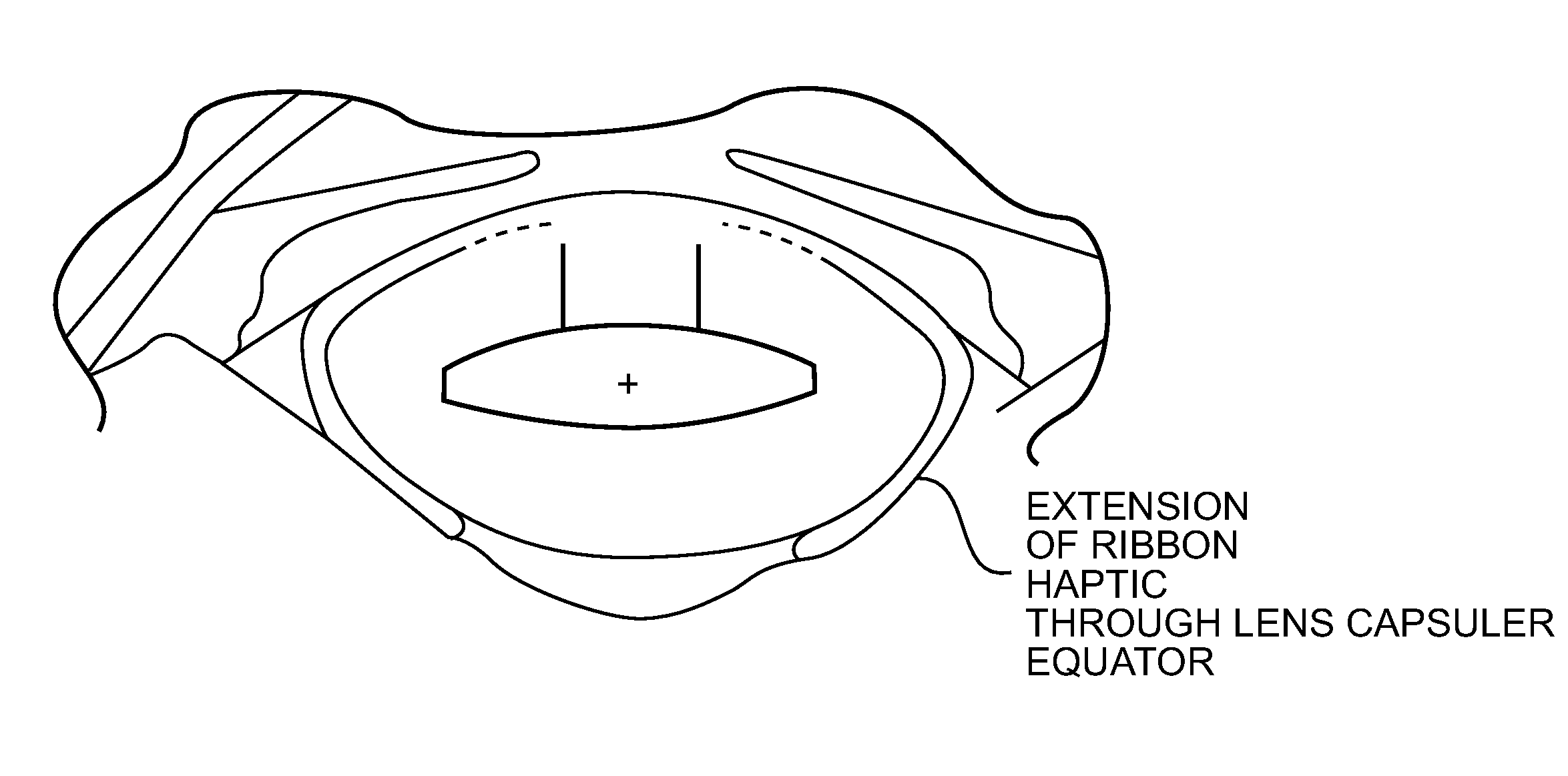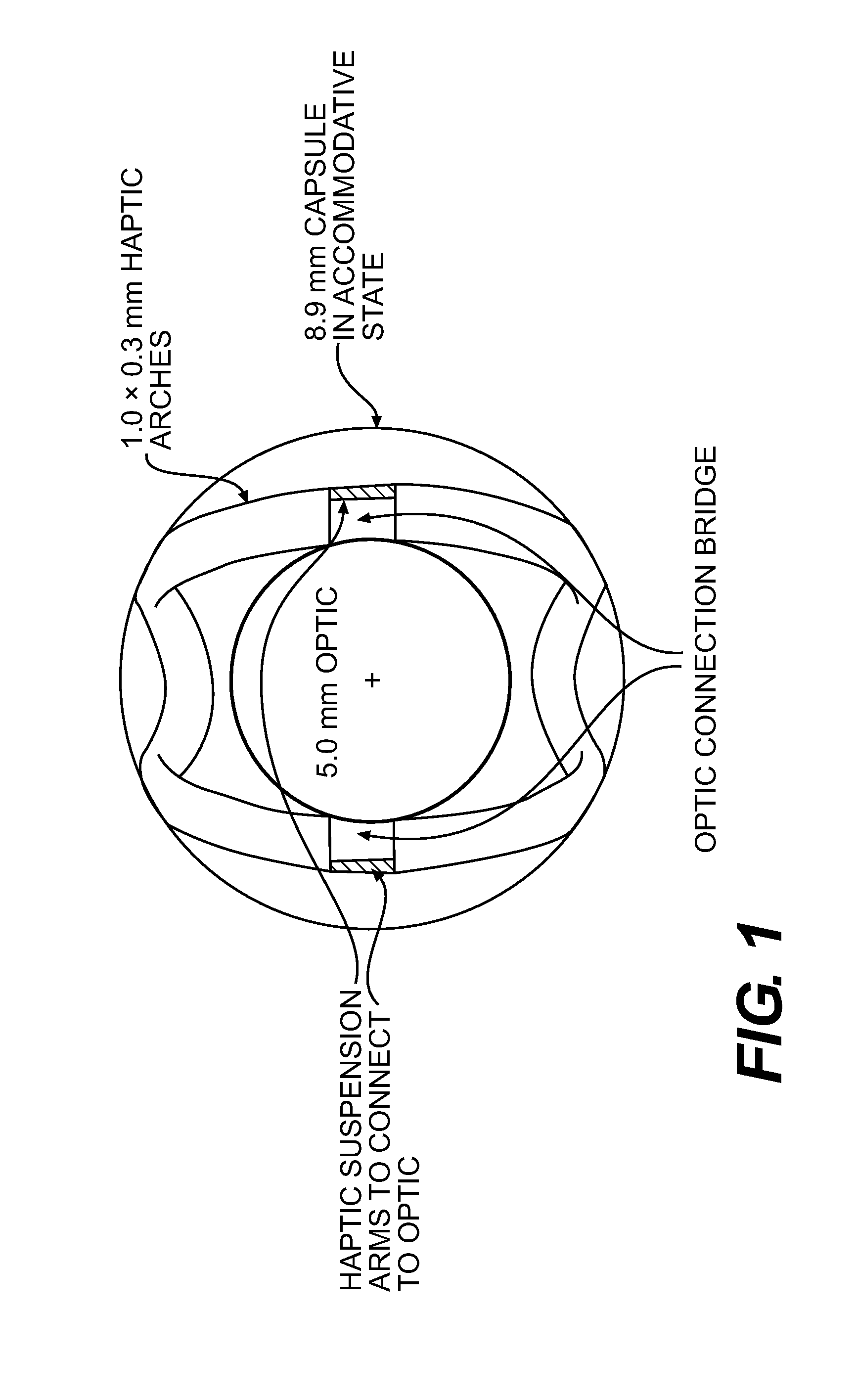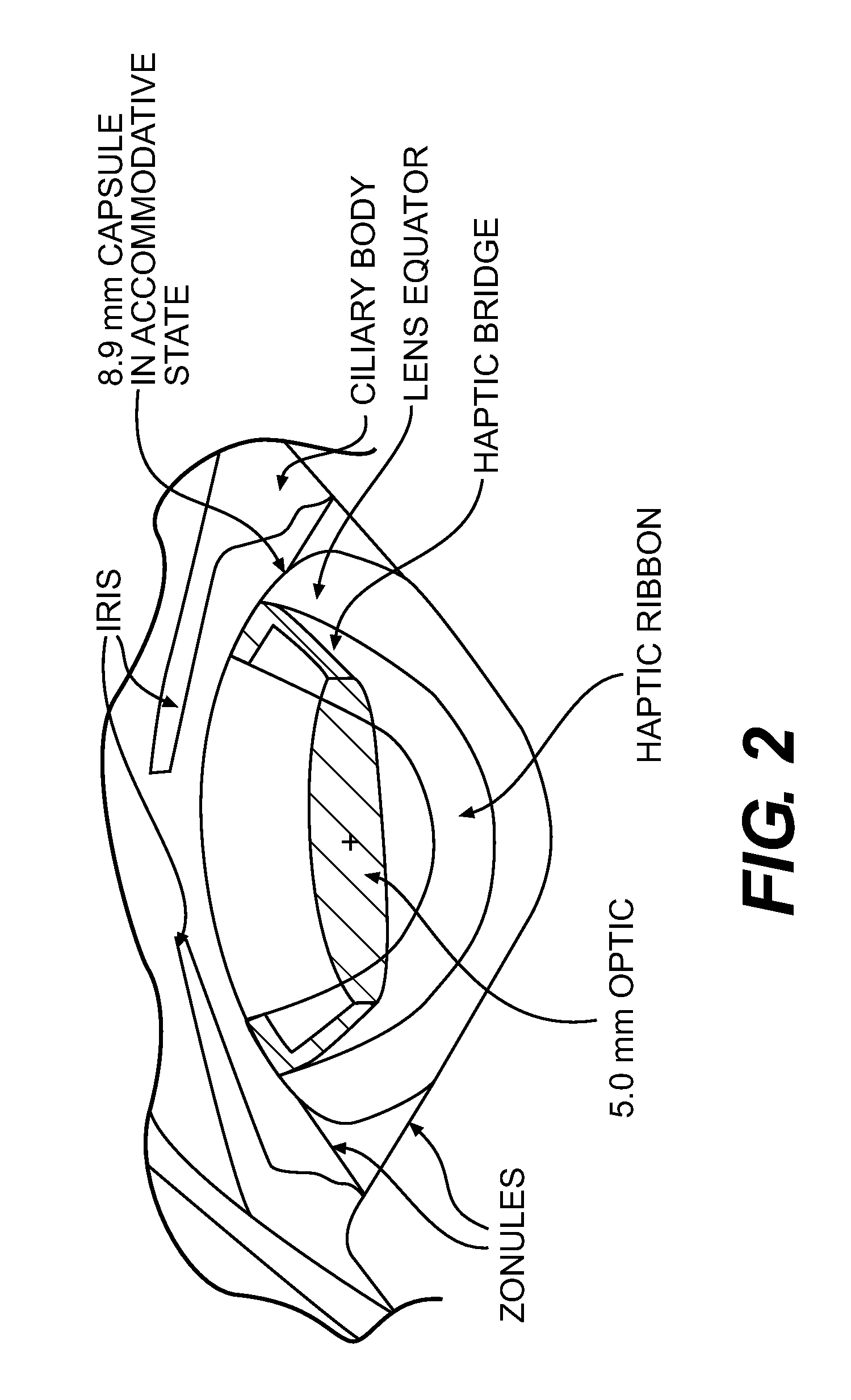Pseudophakic Accommodating Intraocular Lens
a technology of haptic devices and intraocular lenses, which is applied in the field of pseudo-ophaic accommodating intraocular lenses, can solve the problems of minor distortion of optics, reduced or eliminated eye's ability to change focus (accommodate), and may not work in the form of eye surgery for people with serious vision, so as to improve the natural capsular configuration and maintain the natural capular configuration. , the effect of reducing the migration of epithelial cells
- Summary
- Abstract
- Description
- Claims
- Application Information
AI Technical Summary
Benefits of technology
Problems solved by technology
Method used
Image
Examples
Embodiment Construction
[0050]The invention is directed to a haptic for fixation to, and manufacture in conjunction with, an intraocular lens to be implanted in the natural lens capsule of the human eye, once the natural crystalline lens has been surgically removed. The function of the haptic is to secure the lens in an appropriate position within the natural capsule so as to provide optimal visual acuity through the aphakic lens. The haptic is designed to affix to the lens on each side of the optic edge at a point or a series of points so as to provide suitable centration and stability of the optic, and so as to suspend the optic in the open capsular space. The haptic arm is a band of the haptic material that extends from the optical connection to connect with a solid ribbon of haptic material forming a constant loop across the anterior capsule, across the capsular prime meridian, or equator, and onto the posterior capsular surface, terminating at a point distally outward from the optical zone on the post...
PUM
 Login to View More
Login to View More Abstract
Description
Claims
Application Information
 Login to View More
Login to View More - R&D
- Intellectual Property
- Life Sciences
- Materials
- Tech Scout
- Unparalleled Data Quality
- Higher Quality Content
- 60% Fewer Hallucinations
Browse by: Latest US Patents, China's latest patents, Technical Efficacy Thesaurus, Application Domain, Technology Topic, Popular Technical Reports.
© 2025 PatSnap. All rights reserved.Legal|Privacy policy|Modern Slavery Act Transparency Statement|Sitemap|About US| Contact US: help@patsnap.com



